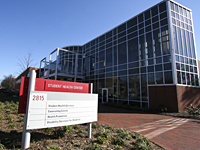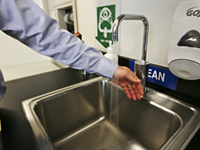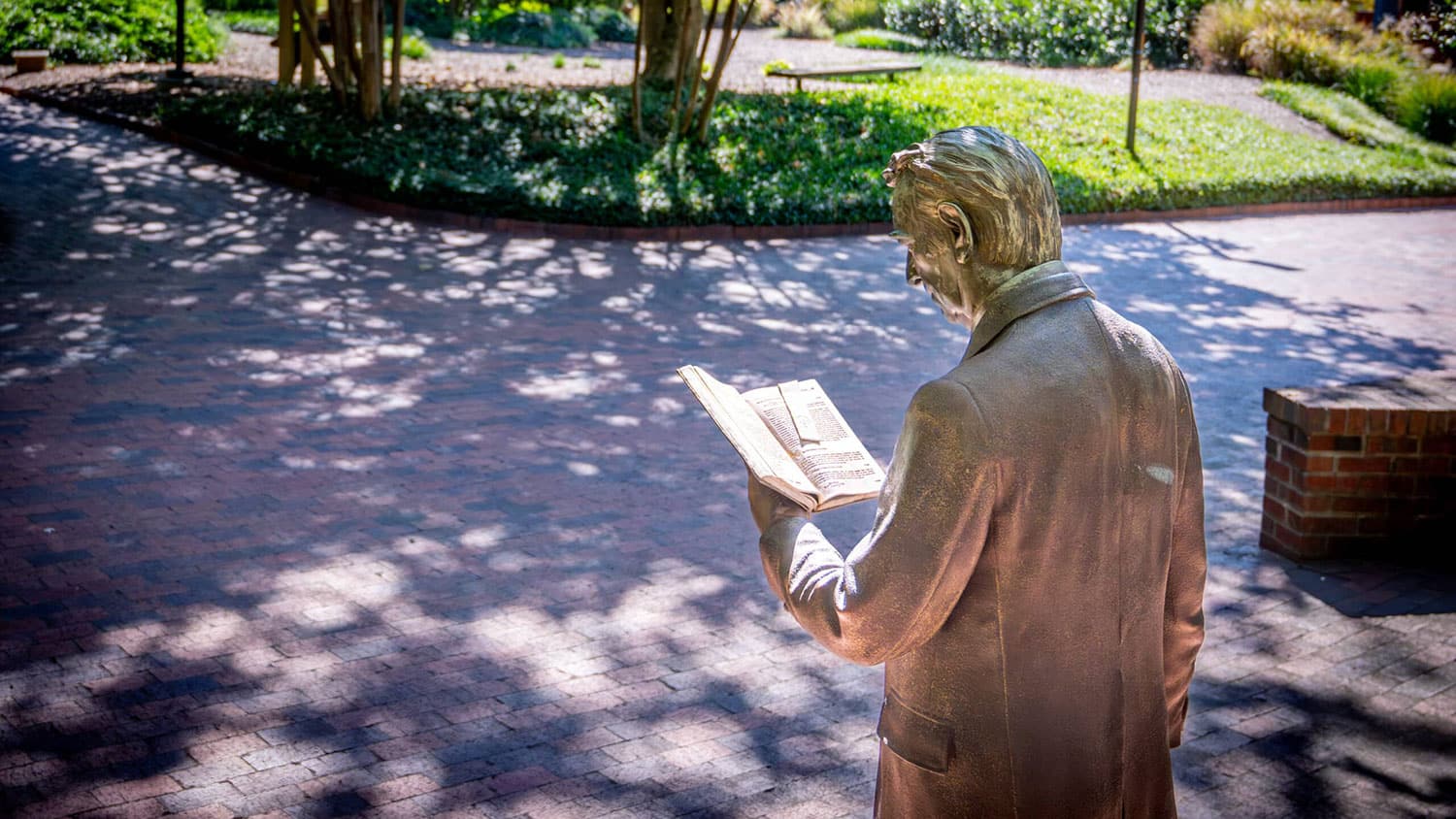Turning Green Into Gold
Students using the south entrance of the Student Health Center off Dan Allen Drive probably don’t realize they’re walking on gold. But there’s a secret world under their feet as they cross the parking lot, and it’s just one of the features that helped NC State earn a prestigious award for sustainable development: the LEED gold rating.
LEED, which stands for Leadership in Energy and Environmental Design, is a rigorous rating system administered by the U.S. Green Building Council to encourage energy-saving construction practices.
“We’ve talked a lot about sustainability in recent years,” said David Dean, outreach coordinator in the University Sustainability Office. “Now we’re turning our vision into reality.”
In 2008, NC State made a commitment to attain a LEED silver rating or better on construction projects over 20,000 square feet. The addition and remodel of the Student Health Center, completed last summer, is the first project to earn a gold rating.
Who’ll Stop the Rain?
So what about those secret sustainable features? Construction project manager Charlie Marshall was happy to point them out during a tour of the center on Tuesday.

One of the goals of the project was to protect the nearby Rocky Branch Creek from excessive storm water runoff, he explained. The solution: rain gardens in the parking lot. You don’t actually notice them at first; they just look like landscaped islands at the end of each row of parking.
But on closer inspection, you’ll notice that the curbs on the uphill sides have cutouts that allow rainwater to accumulate inside the islands, where it is then filtered and absorbed into the ground.
Slow the Flow
Of course not all the rainwater goes into these ingenious rain gardens. But if you look closely, you’ll see that there are several brick pathways embedded in the asphalt between the rows of cars. Another sustainability feature, Marshall said.
The brick paving system is pervious, allowing it to absorb rainwater. Once the water goes through the paving system, it’s filtered by a special spongy material to reduce its content of nitrogen and other materials, and then channeled slowly underground down the slope of the parking lot toward the stream.
Rain that falls on the roof of the health center is captured and channeled into an underground cistern, where it can be tapped to irrigate the grassy common area on the east side of the center.
“We don’t have to purchase water for irrigation,” Marshall said. “We just collect it from God.”
Even so, the designers on the project decided to incorporate drought resistant plants into the landscaping around the building.

Super Sustainable
The design project manager, Sumayya Jones-Humienny, worked with BBH Design of Raleigh to identify every possible sustainable feature that could be incorporated into construction.
“In my opinion, good design is sustainable design and it always has been,” she said Wednesday.
Among the green features in the building are:
- Occupancy sensors to control energy use
- Low flow plumbing fixtures
- Bike racks and a shower on site to encourage employees to bike to work
- Full cutoff exterior light fixtures to reduce light pollution
- Low volatile organic compound (VOC) building materials
- A highly reflective roof
- Variable frequency drives on air conditioner fans
Perhaps the most welcome green feature from an employee’s standpoint is the innovative use of natural light to brighten up virtually every area of the center. Achieving that effect was challenging, Jones-Humienny said, since the project involved an addition to an existing building.
“It was kind of a tight puzzle to work within,” she said. But the design team came through, strategically placing work areas close to large windows.
Long-Term Benefits
Although sustainable features add some expense at the front end of the design and construction process, the benefits are reaped over the life of the project, she said. Plus, they’re popular with the current generation of environmentally conscious students, who look to the university to provide leadership in sustainability.
Certainly the protection of Rocky Branch Creek, which meanders across campus, is an important goal. Before it was restored through the efforts of NC State and North Carolina Sea Grant, it was identified as the state’s most polluted urban stream.
Jones-Humienny walked along the creek recently and was delighted by what she saw.
“It’s working. We’re attracting wildlife back to the creek,” she said.
Then, observing a family of beavers, she added, “As long as they don’t build a dam.”
- Categories:


